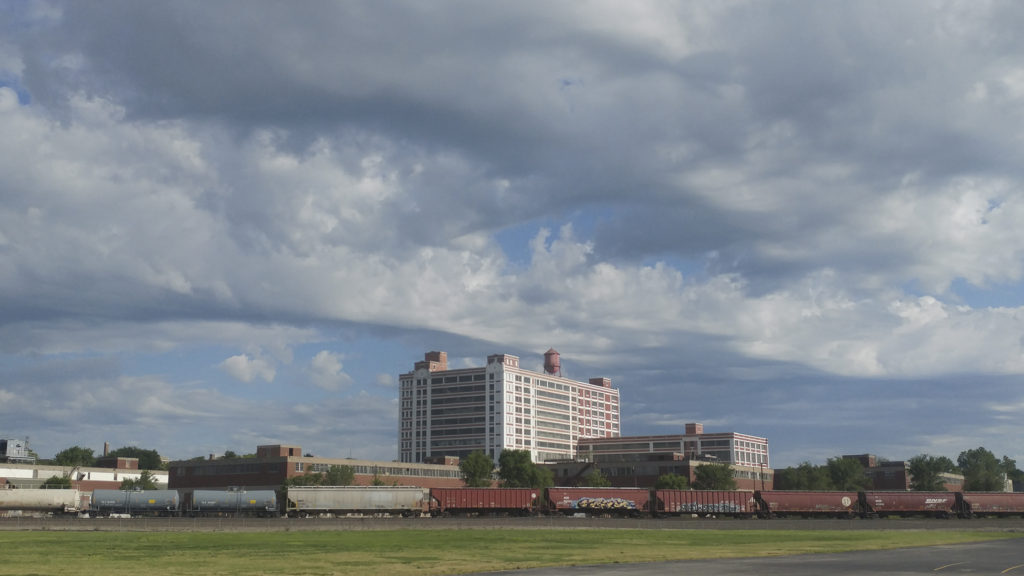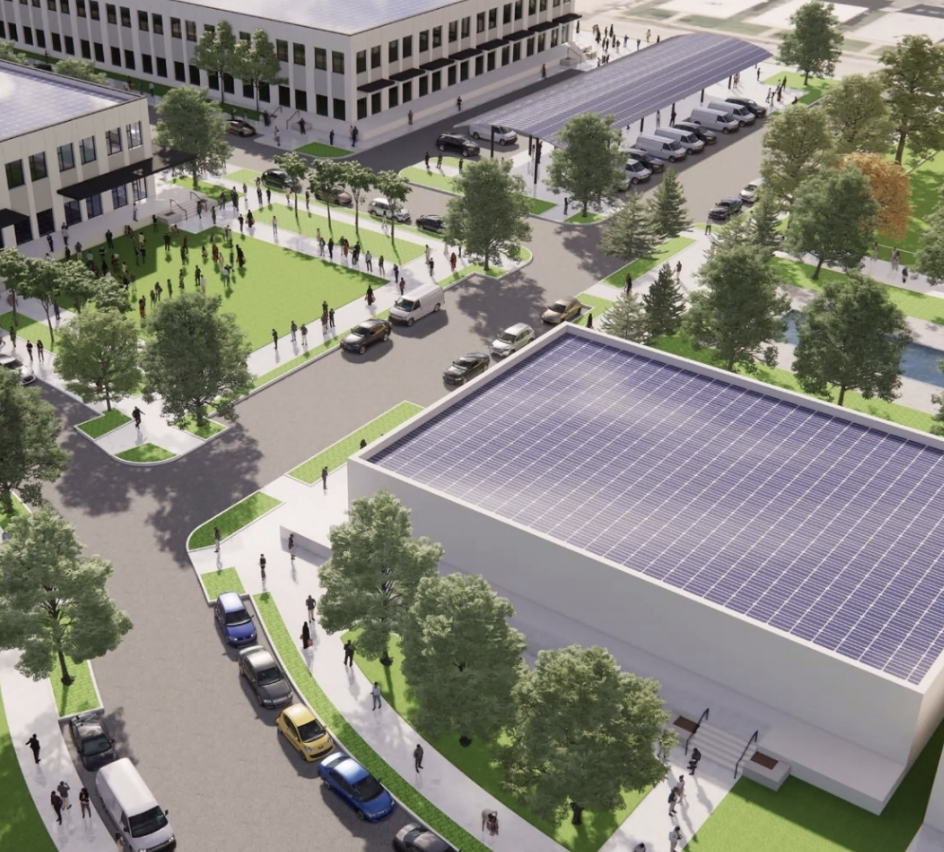Northeast News
July 5, 2017
KANSAS CITY, Missouri – For decades, the 18.5-acre parcel along Independence and Hardesty in the Historic Northeast has remained a relative mystery to area residents. That reality will soon change, as the Hardesty Renaissance is planning to turn the former WWII-era Kansas City Quartermaster Depot into a hub of economic development by January 1, 2019.
Hardesty Renaissance Economic Development Corporation (HREDC) Director Charlie Hopper told the Northeast News earlier this week that the 501(c)(3) non-profit is currently in the process of compiling a list of tenants at the property. The tenants are expected to include education-based focuses around food, agriculture, and wellness and education sciences.
“By 2019, at a minimum, you’re going to have 210,000 square feet that are active, that are open, that people are moving into and fitting their businesses into at Building 11,” Hopper said.
With momentum at the site building, the Northeast News recently reached out to Bill Dunn, Sr. of JE Dunn Construction to discuss his history with the site. JE Dunn built the Quartermaster Depot in 1941 after John Earnest Dunn, Sr. – Bill’s father – offered the lowest and best bid to construct the wartime facility in 120 days. The complex served as a regional hub of wartime activity throughout World War II.
Bill Dunn, Sr. had just completed his sophomore year at Rockhurst College when the project began, and at one point he worked 77 days in a row at a clip of 10 hours per day.
“Since the facility had to be completed in 120 business days, it necessitated two 10-hour shifts, which meant 20 hours each day, in the construction effort,” Dunn told the Northeast News. “From what I remember, the entire Northeast neighborhood was very supportive of the project and of the participation of the United States in World War II.”
At the conclusion of the Quartermaster Depot project, John Earnest Dunn, Sr. returned $180,000 from the contract to the federal government, telling them that he had no desire to earn a profit during the war. Dunn said that President Franklin D. Roosevelt even wrote a letter thanking the company for the patriotic gesture.
“As I remember, my father was one of the first building contractors to make this patriotic commitment, and it resulted in many others throughout the country willing to take the same stand,” Dunn said.
The army relinquished control of the site to the General Services Administration in 1960, after which the property was known as the Hardesty Federal Complex. In 2011, the property was sold to HREDC, which had plans to remediate the property for the public benefit. HREDC incorporated in September of 2011, and has shepherded the property’s path towards a viable public use ever since.
Dunn said that he hopes the property can once again become a vital part of the community.
“I do hope there will be future important use for the Quartermaster Depot site as well as the entire community surrounding it for the benefit of the Northeast neighborhood and the Kansas City metropolitan area as a whole,” Dunn said.
Dunn’s hope is already well into the process of becoming reality. Northwest Missouri State has agreed to open a satellite campus at the complex that will house an urban agriculture program, and Hopper says that the agreement with Northwest Missouri is “just a small step” towards what HREDC is trying to build at the site.
“We started envisioning this thing with Northwest Missouri State University about a year and a half ago, to build what we would call a profession-based learning center,” Hopper said. “It’s this notion that you could bring education to a working class community and actually have working opportunities where you can have a kind of integrated, applied pathway to education that is really heavy on applied learning.”
Hopper also offered some insight on how remediation efforts are progressing at the complex. He said that crews are just now finishing up with interior demo at Building 11, a 210,000 square-foot space that is expected to be the first building activated. Building 10 is currently in the middle of a Brownfields clean-up of the interior, and the ground beneath it has already been released. The roof of Building 10 has also been replaced. The 200,000 square-foot space at Building 9 was recently awarded Brownfields funds from the City of Kansas City, Missouri, in addition to receiving the only Brownfields EPA grant awarded in Missouri this year.
“By 2019, you’re going to have a good chunk of the site active and people moving in,” Hopper said. “People are going to see real change. They’re going to see people hired from the community, they’re going to see people working here, they’re going to see an impact in the businesses surrounding here.”
By this fall, Hopper believes that HREDC will be formally announcing tenants for the complex. As January 1, 2019 approaches, he expects HREDC to hold public meetings in an effort to receive input on how the space can best impact the community.
“We need some more community input. We want to figure out how we maximize this as a public space,” Hopper said. “For 65-70 years, this building will have been kept from the public. This 18 acres in the middle of the neighborhood has been like this dark spot where no one can go. We want to make it welcoming, and we want it to be a place for the people, and I think that’s one of our most important challenges.”




















